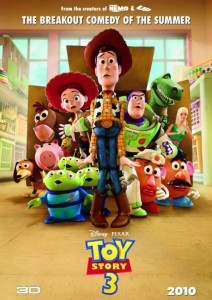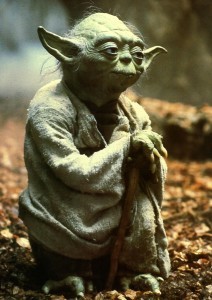Brent Hartinger’s Rules for Writing a Good Sequel
Why are there so few good sequels? Toy Story 2 and 3? The Empire Strikes Back? Aliens?
It’s partly a question of the odds. I’ve written before how most movies and books are pretty mediocre. Since good writing is always much harder than it looks, it stands to reason that most sequels would suck too. 
But while sequels present certain advantages — namely, they’re much easier to market — they also come with a host of unique challenges, the worst of which is sky-high expectations.
In short, whether it’s a movie or a book, how do you write a sequel without disappointing fans of the original work?
I’ve written a fair number of sequels to my books over the years, and I’d like to think I’ve learned a few things. Here are my patented rules for writing a good sequel:
(Please note: writing a dedicated trilogy or series, which is usually conceived of and plotted all at once, is a little different than writing a straight sequel, although I think most of these same rules apply.)
(1) Don’t just pick up where the last story left off.
The most obvious to place to begin a sequel is where the previous story ended. This is what fans are always clamoring for too: “What happens next?!”
I think this is a classic example of non-professionals not knowing what they really want. They liked the original story, and they think they want it to go on as it was.
The problem, of course, is that the original story is over. There was a reason it ended in the first place: the plotlines were all resolved!
The Hangover, Part 2, anyone?
To just artificially restart a satisfactorily resolved story, especially with same or similar conflicts as before, is a recipe for disaster. “No, wait!” you’re telling the reader and viewer. “There’s more I didn’t tell you! There’s an Indian graveyard underneath the first graveyard!” (in Poltergeist 2). Or, “There was a second island full of cloned dinosaurs!” (in Jurassic Park 2).
Please. It’s pathetic, and everyone knows it.
What readers and viewers really want is to once again feel the way the first story made them feel. But you can’t go home again, and you can’t step in the same river twice. Ironically, the only way to make them feel the way they did before is for you, the writer, to do something fresh and different.
(2) Give us something new.
This is the real challenge of writing a sequel. Actually, it’s the challenge of every new project, but it’s especially difficult when writing a sequel, because the pressure is so intense to just do more of the same. 
Plus, there’s that little voice in your head telling you, “The first project was a success. If I want the sequel to be a success too, it can’t be too different.”
Resist that voice! Resist the pressure! The exact opposite is true. It’s actually a paradox: the more different something is, the better your chance of writing a successful sequel.
Think about it: the best sequels completely reinvent their characters and the central story. Aliens even switched genres! (Alien is a straight horror movie, but Aliens is action/adventure). The Godfather, Part 2, has a completely different structure from The Godfather (with half the movie set in a completely different time!).
Seriously: resolving outstanding plot-lines and character arcs from the first project is the least important part of a sequel. What you want are new plot-lines and new character arcs.
In my own work, I specifically set The Order of the Poison Oak (my first sequel) outside of the first book’s high school setting, in summer camp, so it would be a completely different story. Meanwhile, for my latest sequel, Barefoot in the City of Broken Dreams, I have my main character move from Seattle to Los Angeles.
Completely new locations, completely new stories.
Again, the point of a sequel — what viewers and readers really want (even if they don’t know it) — is to make people feel the way they did the first time around. The only way to do that is to start from ground zero, at least when it comes to the plot.
(3) Make the stakes … different.
There’s a big tendency in movie sequels to give us MUCH MORE of the same. In other words, recreate the original plot, but on a grander scale. This can give the story the illusion of being “different” — in Speed 2, they’re on a cruise ship not a bus! — but most people won’t be fooled. 
There’s a better way. In the Harry Potter books and movies (which, admittedly, were conceived as a series), the stakes do rise, but more importantly, they change. Voldemort is introduced and developed in Philosopher’s Stone and Chamber of Secrets, but then in Azkaban, Voldemort takes a complete backseat, and the stakes become “smaller,” much more personal, mostly involving the backstory about Harry’s parents. With the next two books, things return to a more traditional structure, with rising stakes, but then in the penultimate book in the series, Half-Blood Prince, things get more intimate again.
Azkaban and Half-Blood Prince break the pattern of the other books and make the series much more compelling than it might have otherwise been. I think they’re literally the reason why the books succeed.
(4) Play with expectations.
People come to sequels to beloved works with lots of baggage and expectations. This can be terrifying for a writer, but it also presents a huge opportunity: viewers and readers know the previous work well, which means they expect certain things to happen.
You, the writer, can confound those expectations, and the audience will absolutely love you for it. It’s another way you can make your story seem fresh and different.
In other words, the android in Alien is the villain. So, of course, everyone (including Ripley) expects that the android in Aliens is also going to be a villain … until he turns out to be the hero.
Meanwhile, the Harry Potter series also includes a clever reoccurring bit in that each book’s Defense of the Dark Arts teacher is different. But J.K. Rowling keeps you on your toes: sometimes they’re antagonists, and sometimes they’re allies. Rowling specifically plays with our expectations each time.
Once again, things that might have seemed predictable become defiantly not so.
(5) Include at least one great major new character.
This is related to #2, above, but when I’m writing a sequel, I specifically set out to include at least one very memorable new character in each new book: someone unlike any of the characters we’ve met before. This also almost guarantees that it will shake things up and make the story feel at least a little fresh.
In my book The Elephant of Surprise, I decided to make Russel’s latest love interest a guy named Wade, an African American dumpster-diving environmentalist (with a big secret). Needless to say, he wasn’t like any other character in the series up to that point.
And in The Thing I Didn’t Know I Didn’t Know, I created Vernie Rose, a 72-year-old, extremely opinionated former screenwriter, who may now be the single most popular character in all my books.
Incidentally, because I tried so hard to make the characters indelible, they ended up being very different from my main character — exact opposites in many ways — and that took the stories in new and unexpected places.
(6) Likewise, don’t be afraid to let beloved characters go.
 This is a hard one. Readers and viewers are drawn to certain books and movies because of the characters. Now I’m telling you to retire some of them?
This is a hard one. Readers and viewers are drawn to certain books and movies because of the characters. Now I’m telling you to retire some of them?
You have to. If you follow my rule about giving each new book or movie at least one truly memorable new character (hopefully more!), it isn’t long before your cast becomes unwieldy. Keep the essential supporting characters, but let the others go.
How can you tell if a supporting character is essential? They have an essential plot function; they’re not simply shoehorned in to make readers smile.
Yoda makes a massive impression in The Empire Strikes Back, but he barely registers as a presence in The Return of the Jedi. Why? Because he serves no real plot purpose in the latter movie. He has nothing to do.
Speaking of which, are beloved character cameos a good thing? Sure, why not? A few nods to the previous work are always fun.
(7) Try to identify what made the first project so successful, then give us more of that.
I know this sounds like a contradiction with a lot of my earlier suggestions, but it’s not. In terms of plot and characters and story, I really do think sequels need to feel fresh and different.
But there was something about the first project that made it special and successful — so successful that it’s worthy of a sequel in the first place. I said before that people are attracted to sequels because they want to once again feel the way the first project made them feel.
So what did they feel, and why? Was in the tone? The theme? The characters? Your fresh take on some tired old genre?
Try to figure out exactly what it was, and make a point to pay homage to it in your sequel … and then do what you can shake it up again and totally confound our expectations!
 Send to Kindle
Send to Kindle



